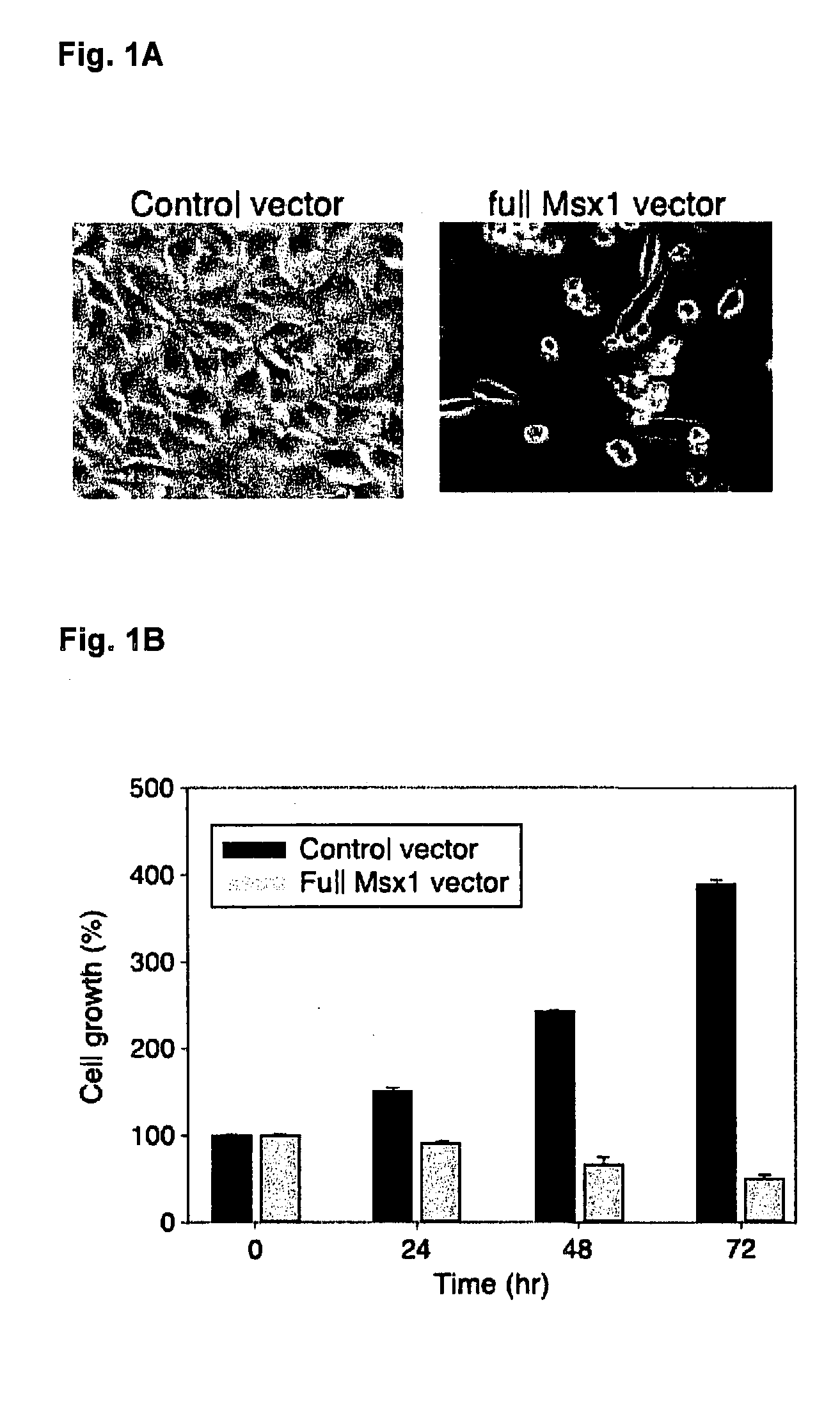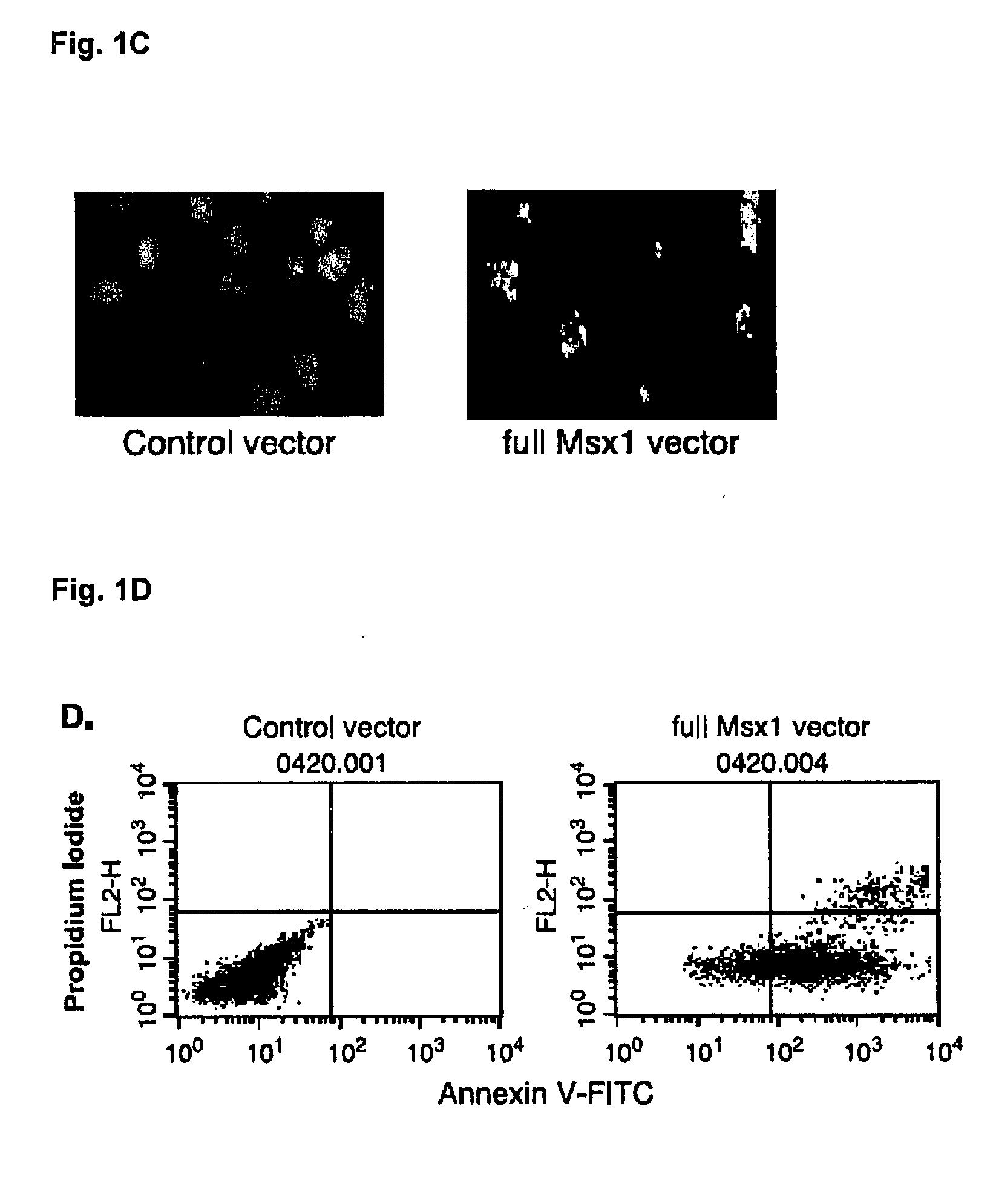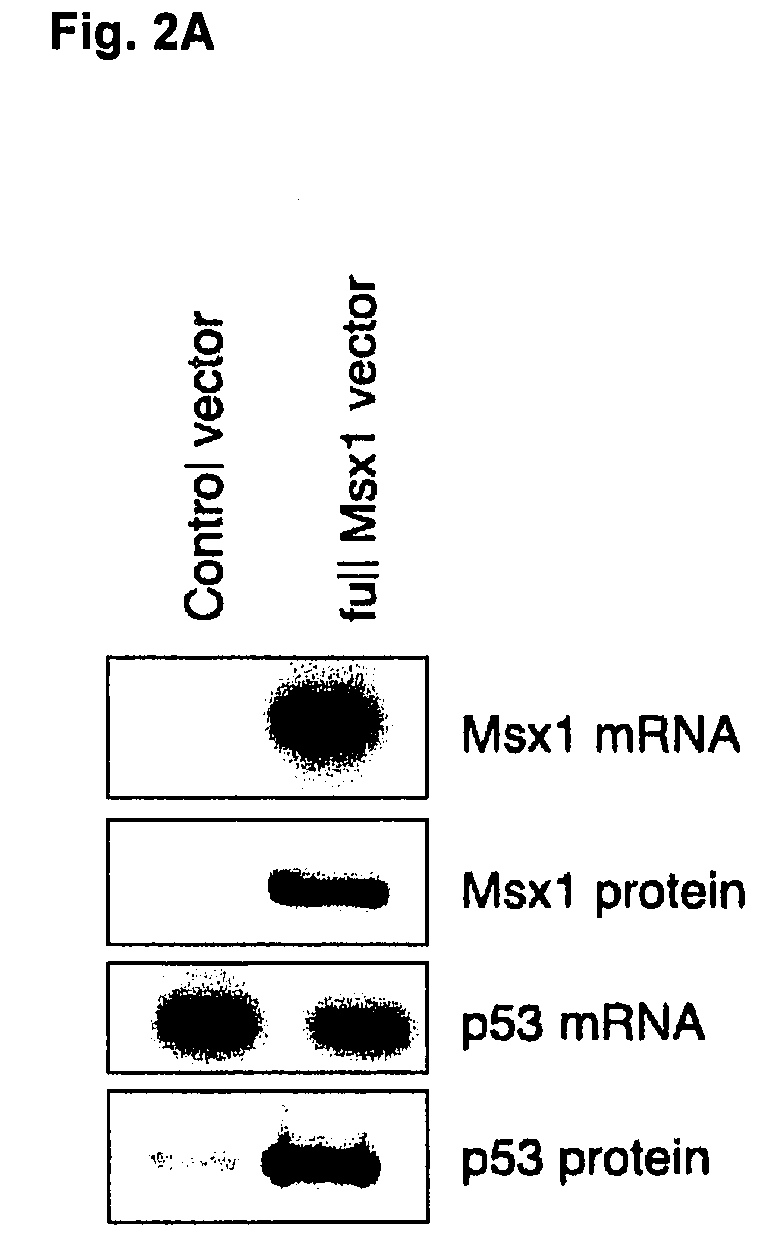Novel agent for inducing apoptosis comprising msx1 or a gene encoding the same as an active ingredient
a technology of msx1 and apoptosis, which is applied in the direction of peptide/protein ingredients, application, peptide sources, etc., can solve the problems of cancer development and subsequent increased risk of mutation, and achieve the effect of effectively modulating apoptosis and effectively inducing apoptosis
- Summary
- Abstract
- Description
- Claims
- Application Information
AI Technical Summary
Benefits of technology
Problems solved by technology
Method used
Image
Examples
example 1
CONSTRUCTION OF VARIOUS EXPRESSION VECTORS
[0078]Various viral and non-viral vectors containing Msx1 or various deletion products thereof as in FIG. 3A, or containing p53, were constructed and used to investigate the activity of Msx1 of the present invention as previously described (Park et al., Cancer Res. 65: 749-757, 2005; Hwang et al., Int. J. Gynecol. Cancer 8: 27-36,1998).
[0079]Adenoviral Vectors
[0080]Briefly, for viral constructs, adenoviral expression systems were used. An adenoviral vector pΔACMVMsx1(Ad-Msx1) encoding Msx1 was prepared by subcloning 0.9 kb of an Msx1 fragment of human origin into a BamHI site in multicloning sites of pΔACMVp(A). An adenoviral vector Ad-p53 encoding p53 was prepared as previously described (Hwang et al., Int. J. Gynecol. Cancer 8: 27-36, 1998). For the production of replication deficient adenoviruses, adenoviral constructs as described above and pJM17 carrying adenoviral genomic DNA (F. Graham, McMaster University, Ontario, Canada) were cotra...
example 2
CELL CULTURE AND TRANSFECTION
[0086]Cervical cancer cell line HeLa ((American Type Culture Collection, USA), Human lung cancer cell line H1299 (American Type Culture Collection, USA), and HEK 293 (Clonetics, San Diego, Calif., USA) were cultured as described (Lee et al., Oncogene (2001) 20:6700-6776; Park et al, ibid). Briefly, the HeLa, H1299, and HEK 293 cells were cultured in DMEM (Dulbecco's Modification of Eagles Medium) and EMEM (Eagles Minimum Essential Medium), respectively, each supplemented with 10% FBS and antibiotics (Life Technologies, Gaithersburg, Md., USA). The cells were incubated at 37□ in a 5% CO2 / 95% air atmosphere.
[0087]DNA transfection into each of the above cell lines and adenoviral infection were carried out as described (Lee et al., Oncogene (2001) 20:6700-6776; Park et al., ibid).
example 3
THE APOPTOSIS INDUCING ACTIVITY OF MSX1
[0088]The activity of Msx1 for inducing apoptosis was investigated as described (Park et al., ibid). Briefly, HeLa cells were seeded onto each well of 4-chamber slides (Nalgene Nunc, Rochester N.Y., USA) at 5×104 cells / well and then transfected with pEGFP / full length Msx1 and empty pEGFP vectors as prepared in Example 1 for 24 hours using Effectene™ (Qiagen, Hilden, Germany) as recommended by the manufacturer.
[0089]The transfected HeLa cells were then tested for apoptosis by morphologic alterations of whole cells using a light microscope (Zeiss, Hallbergmoos, Germany) as well as the nucleus, and by cell growth inhibition using an MTT colorimetric assay and FACS analysis as described (Park et al., ibid).
[0090]FIGS. 1A to 1D illustrate the Msx1-mediated induction of apoptosis in HeLa cells after the expression of a full length Msx1 gene (full Msx1 vector). As a control, cells containing only the vector without the Msx1 gene were used (control vec...
PUM
| Property | Measurement | Unit |
|---|---|---|
| concentrations | aaaaa | aaaaa |
| stability | aaaaa | aaaaa |
| electrophoresis | aaaaa | aaaaa |
Abstract
Description
Claims
Application Information
 Login to View More
Login to View More - R&D
- Intellectual Property
- Life Sciences
- Materials
- Tech Scout
- Unparalleled Data Quality
- Higher Quality Content
- 60% Fewer Hallucinations
Browse by: Latest US Patents, China's latest patents, Technical Efficacy Thesaurus, Application Domain, Technology Topic, Popular Technical Reports.
© 2025 PatSnap. All rights reserved.Legal|Privacy policy|Modern Slavery Act Transparency Statement|Sitemap|About US| Contact US: help@patsnap.com



